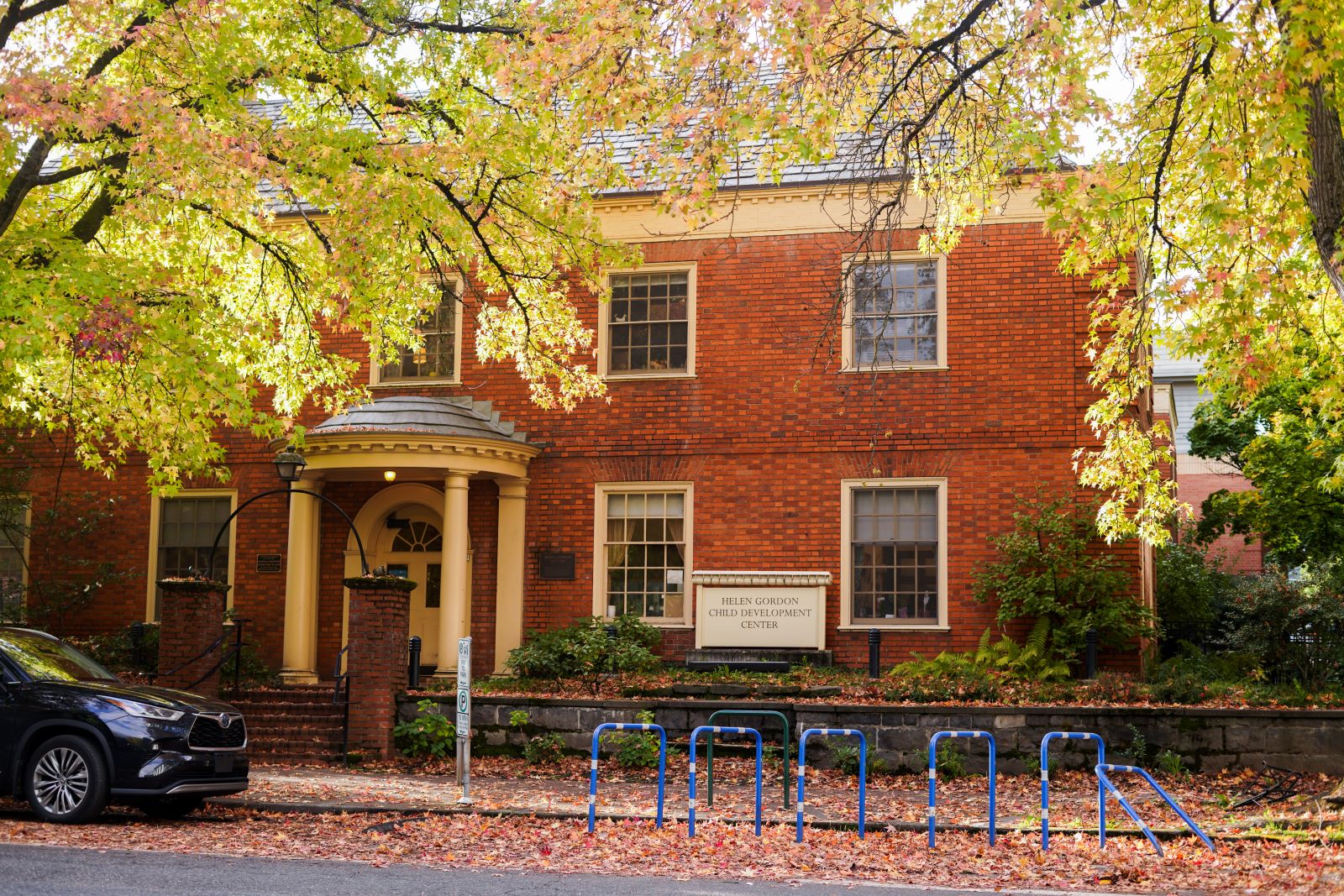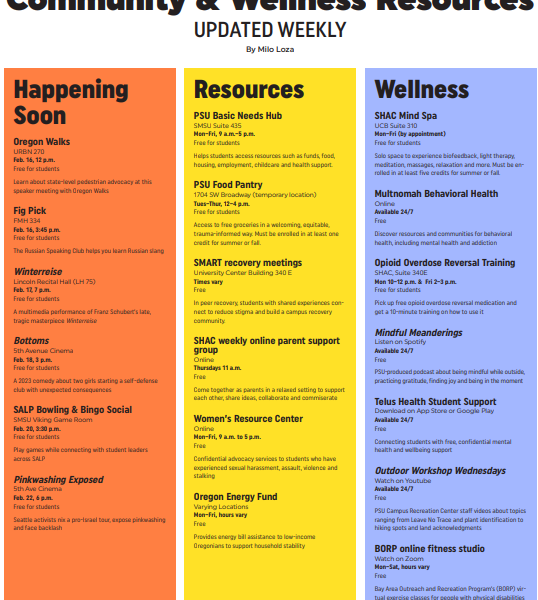Rain falls upon the playground outside the Helen Gordon Child Development Center. The pitter-patter of the raindrops is the only sound echoing through the building other than the construction noises from across the street. Inside the building, it’s even quieter—no shouts, screams, cries or laughter for the moment. Why? It’s nap time right now.
But in a way, the silence relates to more than that fact. It harkens to an unfortunate situation in which the center has found itself in recent years. The Helen Gordon Center struggles with chronic understaffing, possibly due to a more extensive crisis hampering early education across the United States.
The Helen Gordon Center currently holds a waitlist that numbers 67 families. Of these families, 40 are Portland State faculty or staff and 15 are PSU students. These numbers are reflective of a broader crisis which has been affecting Oregon, as well as the rest of the nation, where affordable childcare is inaccessible to many families, especially marginalized ones.
According to the School of Social Work at PSU, the broader childcare crisis in Oregon has been marked by a supply and demand gap in childcare, with countless families stuck on waiting lists. This issue affects employment opportunities for families, which in turn has economic impacts.
The childcare crisis and PSU’s principal childcare center
PSU founded the Helen Gordon Center more than 40 years ago, and it has acted as an integral part of the PSU system by caring for and educating thousands of children.
Today, there are a total of 111 kids enrolled in the center, ranging in age from infants to preschoolers. The center is the principal childcare center for the PSU community, a role which became increasingly significant following the closure of the Associated Students of Portland State University (ASPSU) Children’s Center last fall.
Kristie Kolesnikov is a PSU graduate program student and a staff member for the College of Liberal Arts and Sciences Dean’s office. She’s also the mother of a child previously enrolled in the ASPSU Center. However, after the closure, she was forced to seek childcare off-campus after finding that the Helen Gordon Center wasn’t a good fit for her unique situation.
“It’s unfortunate that things ended up the way they did,” Kolesnikov stated. “ASPSU Children’s Center was key to my success as a student and employee. Without it, I don’t know how long I will stay at PSU. Not only have I lost a basic need in childcare… but I have also lost a part of my community.”
Erin Burns—Teacher and Staffing Coordinator at the Helen Gordon Center—pointed at the current staffing situation as one of the primary obstacles to running the center efficiently.
“The biggest challenges that we face are one, our staffing model, and two, our rates of pay,” Burns said. “Right now, each classroom is staffed with two full-time, SEIU-classified teachers. The rest of the ratio is made up of student staff.”
The Service Employees International Union (SEIU) is a labor union which represents workers in education.
This lack of sufficient staffing frequently leads to cutbacks in operations within the center. On Feb. 14, staff had to close down one of their classrooms, because there were not enough qualified teachers to keep it open.
The next day, they would need to close another. When this happens, there is no room for the children, and the parents either need to keep them at home or find alternative care. In these scenarios, the families were given rebates.
At the root of this staffing problem seems to be a lack of funds, according to Joanna Yoder, the center’s Administrative Coordinator.
“Funding is definitely the fundamental piece to be able to attract good talent [and] good teachers who want to stay here,” Yoder said. “Turnover is not ideal in these positions. Consistency in the program and for the children is what we’re striving for.”
According to both Burns and Yoder, the center suffers from a vicious cycle of understaffing, which leads to lower capacity for enrollment and less revenue, making it harder to hire and keep new staff.
However, there are other factors besides a lack of funding that Burns and Yoder believed contribute to understaffing. In addition, they both cited the staffing model as limiting their ability to hire new qualified teachers.
Student staff at the center are paid $15.45–16.20 hourly, depending on how long they’ve worked there. Assistant lead teachers are paid $15.59–19.72, and fully-licensed lead teachers make $16.71–24.83.
Several staff members have worked at the center for so long that their wages have capped out.
“Our current rates of pay are not competitive with other centers,” stated Burns and Yoder in a document sent to Portland State Vanguard.
Many childcare centers are funded by Preschool for All (PFA), a Multnomah County measure passed in 2020 that aims to grant universal access to preschool. Early Head Start (EHS) is another program dedicated to providing accessible early education to those in need.
Locations funded by these programs offer a minimum salary of $28.11 per hour for employees with bachelor’s degrees. According to the most recent status update from Multnomah County, the PFA program has funded 82 preschool programs across the county, totaling nearly 1,400 spots for children.
Most staff members at the center possess either a bachelor’s or master’s degree, and the center has a partnership with EHS.
The majority of funds, however, come from the university and are allocated to the center by the Student Fee Committee (SFC). As such, the university’s current financial limits and how they’re being used prevent the center from raising wages for their employees. This means some teachers work in association with the EHS program without receiving the typically associated pay.
“Right now, a big portion of our budget comes from the student fee committee,” Yoder said. “They are really supportive of hiring students and student employment… It’s great that we can hire students, but that creates an imbalance.”
Licensing
The hiring process for a childcare center differs from that of a coffee shop, grocery store or fast-food restaurant. While the latter positions may be looking for anyone over the age of 16 with a little free time, a preschool has to be much pickier.
Comprehensive licensing procedures and steep education and experience requirements considerably narrow the pool of potential employees.
The Helen Gordon Center is a licensed childcare facility, which means it is required to follow all procedures of the Oregon Department of Early Learning and Care. Under this system, there are three different classifications for teachers, each with different responsibilities. Two of these levels fall under the category of teacher aides, meaning they cannot be in charge of a classroom by themselves for any prolonged period of time.
To become a fully-licensed teacher, employees must have at least 750 hours of teaching experience or possess an associate’s degree in at least one of five specific majors related to early childhood education. Alternatively, teachers can become qualified if they have received a state or nationally-recognized certification to do so, such as a Child Development Associate certification.
At the center, in total, there are 19 fully-qualified teachers, 11 higher-level aides and 56 lower-level aides.
Another factor that makes it easier to hire teacher-aide positions is that the center’s funding comes from the SFC. There is a strong motivation from the SFC for the center to hire students.
According to Burns, who’s worked for the center since 2003, they used to hire a lot more students who were already on track to become early childhood teachers. These were students majoring in child development, special education, early childhood education and other related fields. These hires would most often end up qualifying for promotion as they continued to work at the facility while completing their education. Unfortunately, they receive very few applications from students in those fields these days.
“When the pandemic hit, a lot of programs moved to remote and online learning,” Burns said. “Today, the College of Education still does a majority of their classes remotely. So we’ve seen a decrease in those students applying for jobs, because they’re no longer here on campus. Why would you come downtown to work if you live in Beaverton and are taking school remotely?”
Conversation for solutions
PSU President Ann Cudd recently took part in a Portland Central City Task Force meeting which aims to revitalize Portland in the wake of its most prominent troubles from the past decade. In a blog post written by Cudd reporting on the committee meeting, she stated one of the principal goals as “expanding access to childcare by removing barriers and providing incentives to establish facilities in the central city.”
“It makes us hopeful that President Cudd is so passionate about early childhood education,” Burns said. “So we’re optimistic that maybe people in those powerful positions on campus can make those decisions in terms of funding that can support us a little more.”
Overall, Burns and Yoder both hoped for a shift in how people view early childhood education.
“In my personal belief, [early childhood educators] are the people who are building the foundation for these children for the rest of their lives,” Yoder said. “I think some changes need to come from a systemic point of view that values early childhood education to the extent that we value all other levels of education in our country.”






